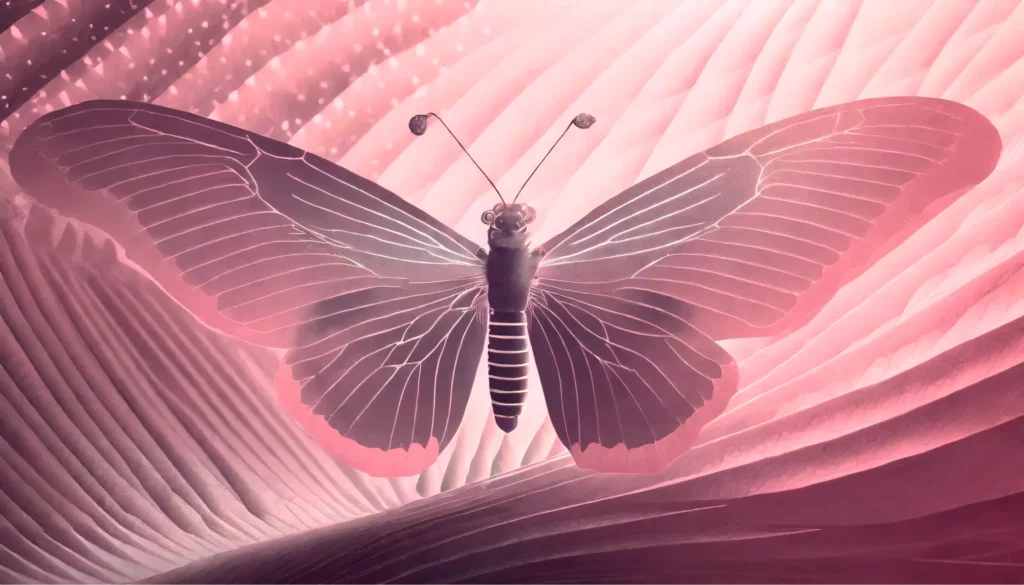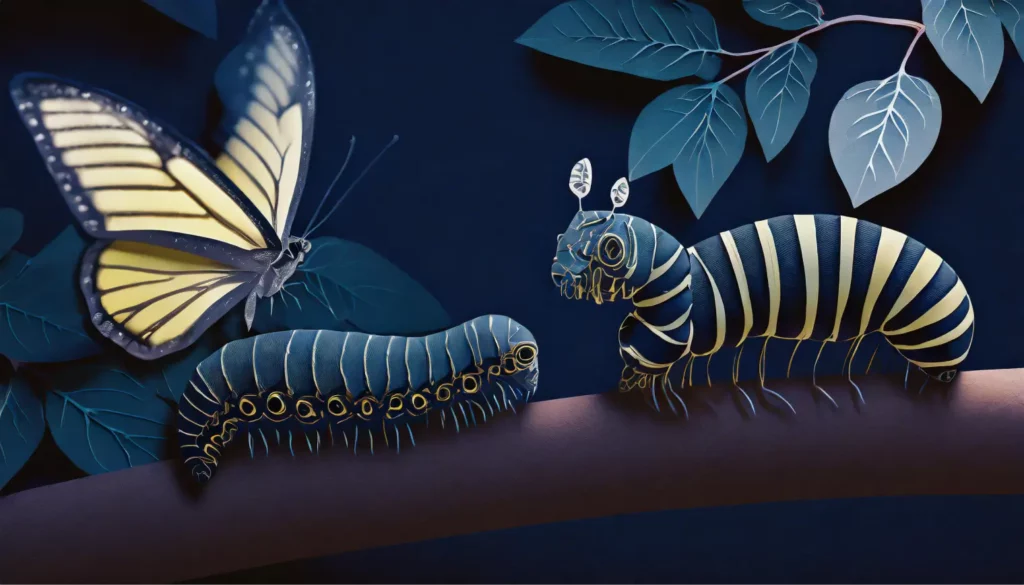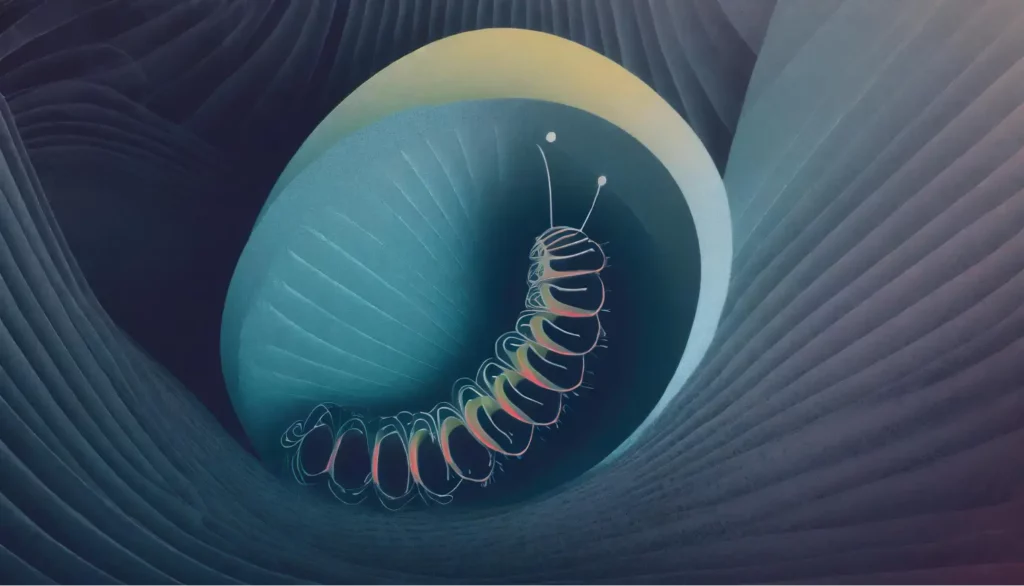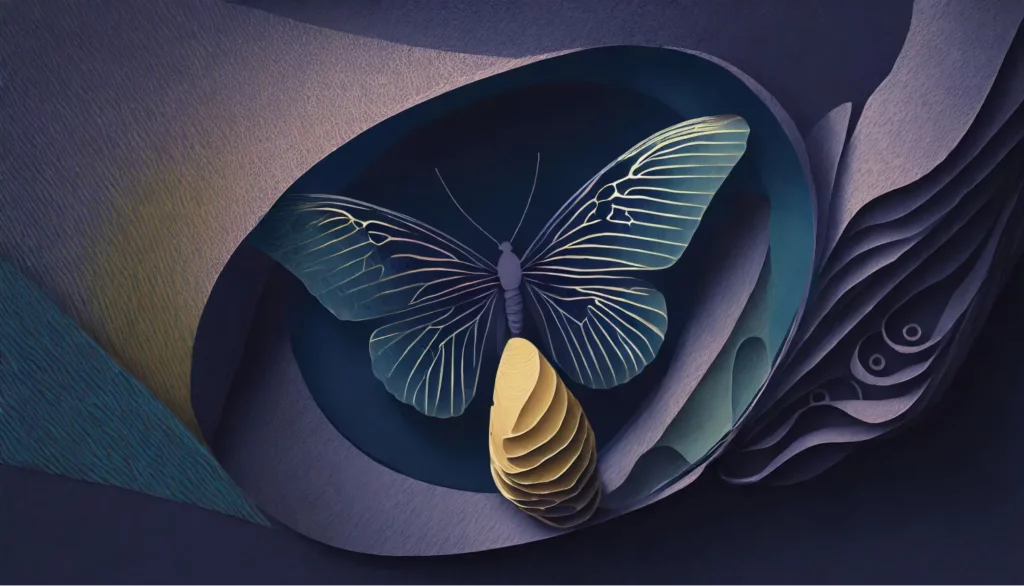Org Transformation: Inside the Cocoon of Change
Is your company currently a caterpillar in a cocoon or have you already gone through a major transformation and turned into a butterfly? Let’s find out!


So, let me say this right off the bat, I don’t think Black Label is a butterfly yet, but we are well on our way to transforming into one. If this chrysalis of a metaphor makes you curious, buckle up and come along for a ride of personal and organizational transformation.
All Companies Start Off as Caterpillars
Working on and observing the changes at Black Label, partner companies as well as organizations my friends work for, I’ve learned that, much like a caterpillar, every company goes through a repetitive cycle of growing, scaling and restructuring to meet new strategic goals and requirements. Even the process of creating rules and structures appears to reflect nature e.g. animals gain new evolutionary abilities, new tools and then develop new ways to connect with each other. While a caterpillar’s brain drives its transformation process, it is the Management and Board that drives change for a company. So, bear with me now as I embrace my inner Biologist and examine the humble caterpillar and try climbing into its cocoon to better understand its transformational process.
Long before a butterfly appears there is an oval egg (usually) on a leaf. What first emerges from that egg is not a butterfly but a caterpillar. Crucially for our metaphor, this caterpillar contains all of the organs of the butterfly inside of it in bundles of cells called imaginal discs. Caterpillars spend most of their lives just eating, beginning first by eating the leaf on which they are born. Fun fact, like most babies, caterpillars can be picky eaters which is why butterflies only lay their eggs on the tastiest leaves to provide their offspring with the best fuel so they can start growing as soon as they hatch.

When caterpillars are done eating and are ready for the next stage, they form a silk cocoon inside which dissolves into a soup-like substance. During this process, imaginary discs, organs, and tissues start to change. The whole process lasts a few weeks or even months before a newly created butterfly emerges from the cocoon. If you’re interested in climbing into the cocoon, National Geographic has a pretty great article about the metamorphosis of caterpillars.
For both companies and caterpillars, the process of metamorphosis tends to be slow, a combination of incremental changes rather than a sudden big-bang moment of magical instantaneous transformation. Both processes may require turning existing structures into a soup from which a new body is created. These changes may be wholly unnoticeable from the outside, but on the inside they can be nothing short of revolutionary.
Let’s take a step back and think for a second about a change in your organization. How big is the change you’re thinking of? Is it a giant life-changing type that struck your organization with the strength of a meteor, or is it more of a small cosmetic change that everyone in your company easily accepted and embraced within a day? No matter how big a change might be, it has to be effective. Even the smallest of changes needs to be implemented so that it will motivate instead of intimidate, with easy buy-in and repetitive and optimized processes.
But, to answer the question of how you might go about making an effective change (small or large) in your organization, you need to truly understand why you want to implement it in the first place. Is this really the right moment? Is the change reactionary or pre-emptive? What problems need to be solved and what goals need to be achieved? Let’s take a look at Black Label and I’ll highlight some of the changes currently going on in our cocoon and you can be the judge whether our caterpillar has yet begun to transform.

The (cater)Pillars of our Organization
Making a change in any company sometimes requires the patience of a Very Hungry Caterpillar, eating for a whole week and then waiting for two weeks in a cocoon to finally emerge as a butterfly. We also need to be just as picky about who and what we choose to take onboard.

I first joined Black Label in the fall of 2015. There were only four of us in a small co-working office and there was almost no organizational structure whatsoever. Now, as of Winter 2024, we’ve scaled to almost 40 employees and over the course of these eight plus years of action-packed IT adventures, I’ve had plenty of opportunities to tweak and play around with our growing organization. Only recently have I started to feel confident that I know what I’m doing and how I’m doing it (well, almost).
Since I became COO a few years back, Black Label has continued to grow steadily and Grzegorz Iwacz (BL CEO & Founder) and I have both made countless changes to the organization, but with each and every case we began by discussing how the given change might affect the entire team. More often than not, we opted to avoid implementing any changes after coming to the conclusion that it would potentially be destructive to our overall team atmosphere or culture. Every time any type of change was needed at Black Label, even a small one, we would discuss it at length in an effort to understand why, how, and what we could achieve with our small adjustments to our navigational course. The choice of words is crucial here, as Grzegorz and I always opted for small changes and adjustments rather than larger transformations.

Keeping the pace of transformation slow and steady requires coordination and synchronization, so that all members of the team can remain on the same page, more or less at all times. At Black Label, we prefer not to make “The Change” i.e. one big change in the form of a top down transformation, but instead we focus on one small change at a time. “The Change” is a huge leap into the unknown or a monster hiding under your bed. A small change, on the contrary, is just one piece of a larger puzzle and when placed in the right spot, it makes the bigger picture clearer and sometimes complete. In the back of our minds we always try to think about the happiness of the people we work with. We don’t want to scare them, we want to help them understand and even participate in the process as much as possible. And for that, we need caterpillar-in-a-cocoon levels of patience.
Climb Inside the Cocoon
Smaller changes may ultimately lead to a larger transformation, but there is no obligation for this to happen. Personally, I’m not a fan of the opposite process where an idea for some larger transformation can force any number of sudden and often chaotic changes. I think Black Label is currently in the chrysalis stage, and just like in nature, the changes inside our cocoon are slow and gradual. Many structural elements have disappeared only to be rebuilt from scratch – yet often from the outside this process is almost invisible. With our approach, we are already moving ahead with building structures and processes that most companies our size would never consider, yet still every decision is heavily weighed prior to its implementation. This gives us flexibility, stability, and sustainability which is something I only dreamed of as a young developer with a budding passion for building effective organizational structures.
Black Label is not in the process of making one big transformation. In our case, our transformation would be the slow appearance of one organ after another inside the chrysalis soup and there is no pressure or timeline to emerge fully formed. This slower process brings with it different challenges. Being inside a cocoon prevents you from being able to look at your organization objectively. Of course you may see smaller changes here and there, but only by being outside of the process entirely can you gain the perspective you need to properly evaluate whether the changes are working in harmony.

You may ask yourself, is it our structure or our culture that has evolved? Or perhaps what has changed is in fact the “outside”, making us just implement one-time reactionary adjustments to external events? Seeing your organization from the outside, you may observe how the entire organism may have changed and what “biological processes” may have caused each change. Therefore, after implementing several changes you may hear from your friends, clients, and finally, your non-decision-making colleagues, that the company has changed in a way that merits the term transformation. Be prepared to listen to congratulations for something you hadn’t even noticed yet.
Now, there are of course methods of monitoring changes objectively, even while being directly involved in their execution. This is where measurable metrics like KPIs, OKRs, ROI, adoption rates etc. come in. These types of metrics can even be used retroactively, as plenty of people use them to look back and better understand changes that were already implemented. But what if we could find a method to take a peek inside the cocoon and see what is actually taking shape? Fortunately, my background is in medical physics and there are some pretty cool ways of doing exactly that with both cocoons and companies.

I don’t want to bore you with a detailed explanation of medical imaging techniques, so let’s just say that for most cases non-invasive methods like CT, MRI or Ultrasounds are best. It’s important to note that invasive methods are also safe, so you should not be too worried if you have to make a PET, SPECT scan. However, before you inject radiation inside a tiny cocoon maybe it makes more sense to test first using simpler techniques.
It’s a similar principle with companies – perhaps it’s better to start with an internal analysis before starting collaboration with an external auditor for example. An internal analysis may include internal pulse-check surveys, setting up regular feedback loops about meeting specific metrics, or use the simplest and easiest method of all – walk around and talk to your employees and ask them what they think. Just like imaging techniques, different analysis methods constitute different approaches which give you different results and different resolutions.
So back then to the question I answered at the very beginning…
Is Black Label Turning into a Butterfly?
Before I revisit our flight status, I want to mention one more surprising biological fact – caterpillars are able to evolve into two separate species. And while the butterfly is revered as one of the most beautiful insect creations, the moth on the other hand is considered an uglier and more terrifying creature (I personally disagree with all the moth hate).
When looking at the metamorphosis of a caterpillar, it might be valuable to not only look at what it gains, but also at what it loses and maintains during the transformation process. Even though a new creature emerges from the cocoon, it still remembers when it was something simpler. And it doesn’t forget the lessons it learned along the way, the memory of how it grew and changed. This is much like a company trying to remember its roots and the challenges it has faced along the way. The core of a company defines who it is, and why it exists, so if the company is happy with who it has become, it is important to keep it safe and take care of it no matter what grand plans you might have for your company’s growth.

So, to answer the initial question again, Black Label is absolutely in the process of transforming into a butterfly. But I am still not entirely sure what species will exit our cocoon and when. I am quite positive however that whatever does finally emerge will be breathtaking. Things are starting to take shape and more than a few new structures are already forming inside our chrysalis. People outside the company already seem to be quite excited about our evolution. The fact alone that you’re reading this article on our new Blog Label means we are ready to let the outside in. And internally, all the out-of-soup metrics are in place as well, we just need to wait a while longer to see what emerges.
My next post will focus on a few fuzzy non-invasive images I’ve collected over the years (actual photos, not medical metaphors), I’ll hold them up to the light and see what they may have to say about the future shape of our Black Label butterfly.




